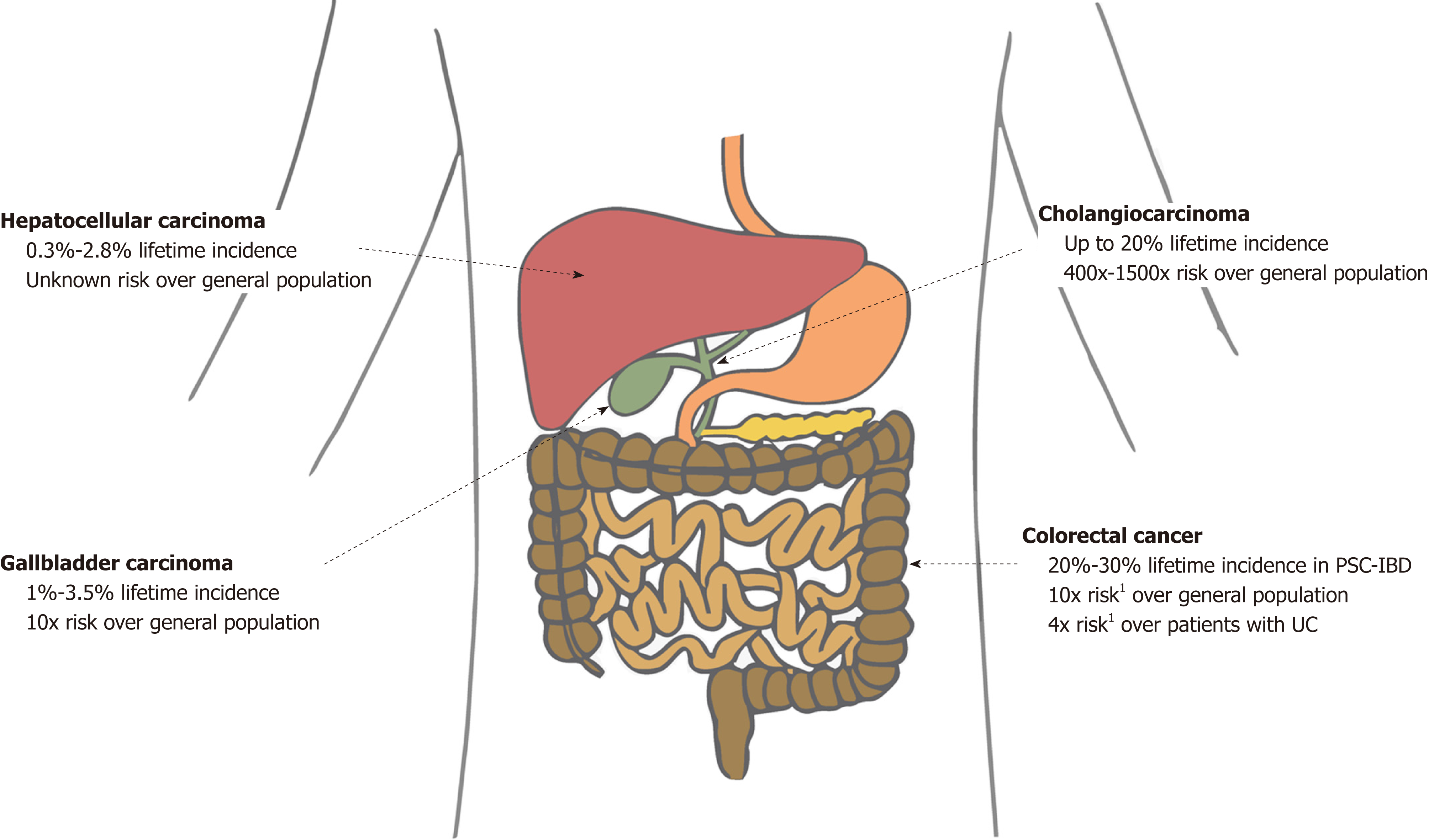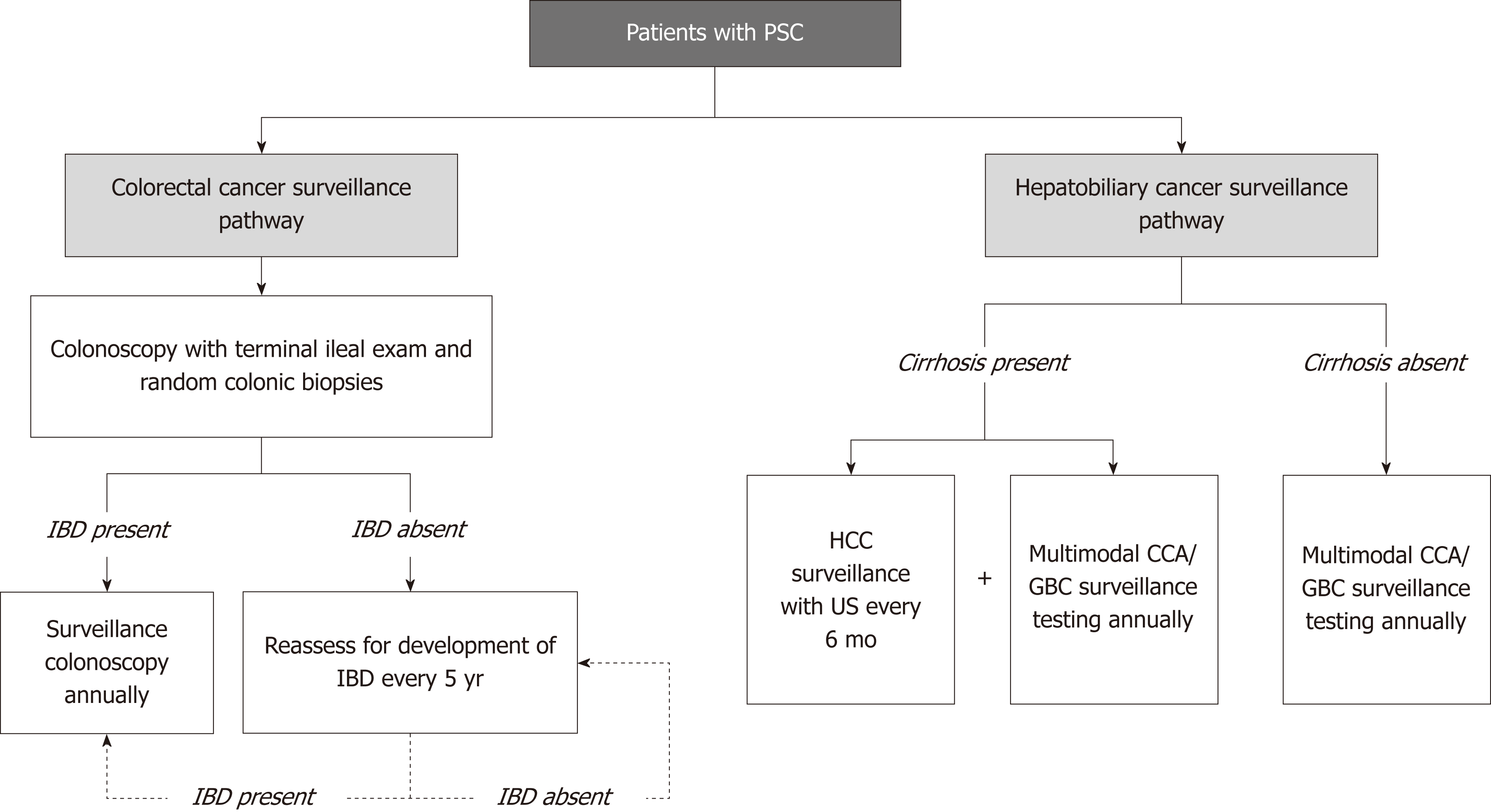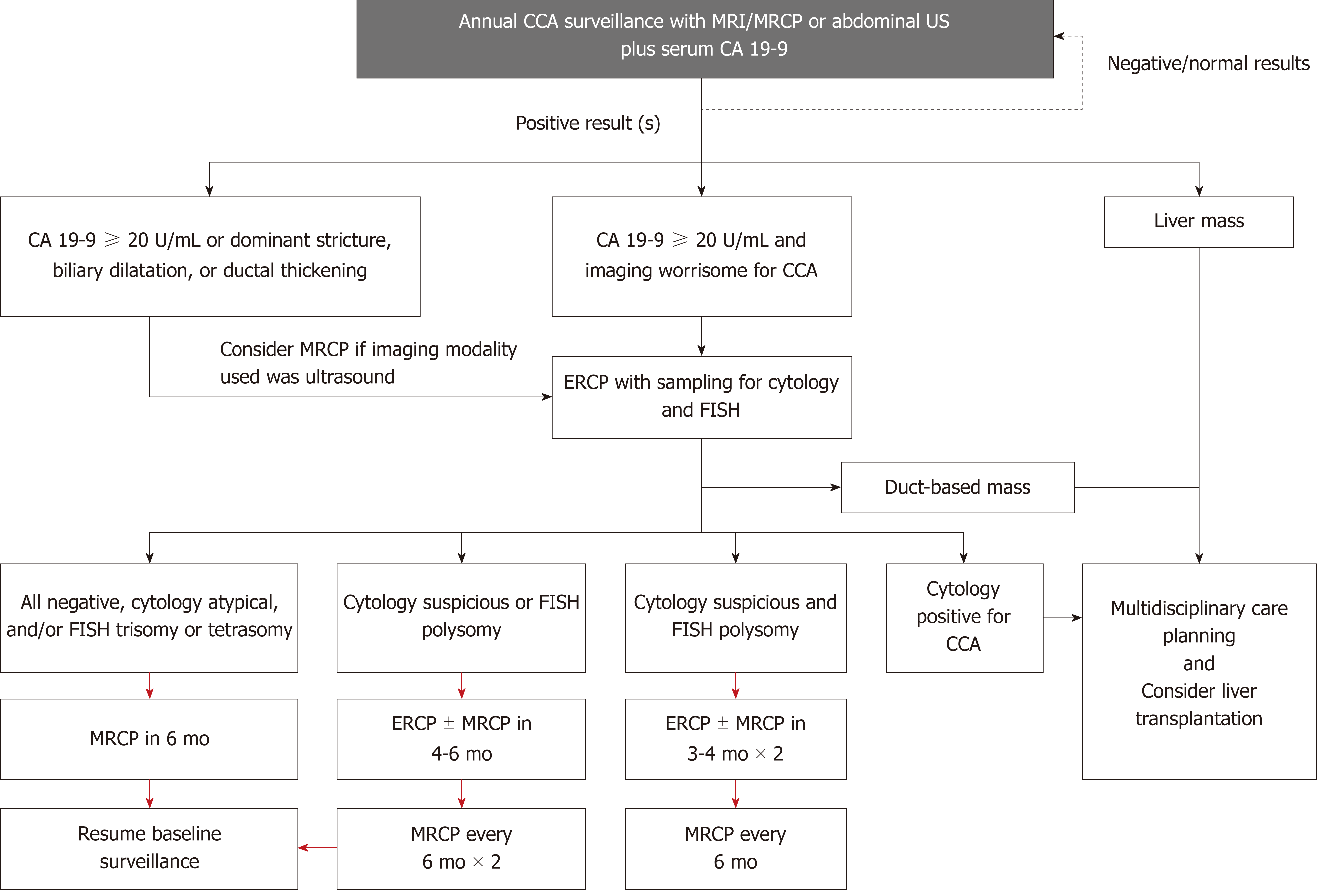Copyright
©The Author(s) 2019.
World J Gastroenterol. Feb 14, 2019; 25(6): 659-671
Published online Feb 14, 2019. doi: 10.3748/wjg.v25.i6.659
Published online Feb 14, 2019. doi: 10.3748/wjg.v25.i6.659
Figure 1 Lifetime incidence of various cancers associated with primary sclerosing cholangitis and their respective risks compared with the general population.
Estimations of lifetime incidence are made from limited available data (predominantly based on 10- to 30-year longitudinal studies), and thus may often underestimate true lifetime risk. 1The risk in patients with PSC-IBD (not PSC alone) is 4× the risk in patients with UC alone and 10× the risk in the general population. PSC: Primary sclerosing cholangitis; PSC-IBD: Inflammatory bowel disease co-existing with primary sclerosing cholangitis; UC: Ulcerative colitis.
Figure 2 Overview of cancer surveillance in patients with primary sclerosing cholangitis, beginning at time of primary sclerosing cholangitis diagnosis.
This overview is based on recommendations from the American Association for the Study of Liver Disease practice guidelines[44]. CCA: Cholangiocarcinoma; GBC: Gallbladder carcinoma; HCC: Hepatocellular carcinoma; IBD: Inflammatory bowel disease; US: Ultrasound; PSC: Primary sclerosing cholangitis.
Figure 3 Suggested cholangiocarcinoma surveillance in patients with primary sclerosing cholangitis.
Adapted from Tabibian et al[103], with permission. Red arrows represent assumes stable findings; CA 19-9: Carbohydrate antigen 19-9; CCA: Cholangiocarcinoma; ERC: Endoscopic retrograde cholangiography; GB: Gallbladder; GBC: Gallbladder cancer; FISH: Fluorescence in situ hybridization; HCC: Hepatocellular carcinoma; MRCP: Magnetic resonance cholangiopancreatography; US: Ultrasound; ERCP: Endoscopic retrograde cholangiopancreatography; MRI: Magnetic resonance imaging.
- Citation: Fung BM, Lindor KD, Tabibian JH. Cancer risk in primary sclerosing cholangitis: Epidemiology, prevention, and surveillance strategies. World J Gastroenterol 2019; 25(6): 659-671
- URL: https://www.wjgnet.com/1007-9327/full/v25/i6/659.htm
- DOI: https://dx.doi.org/10.3748/wjg.v25.i6.659











